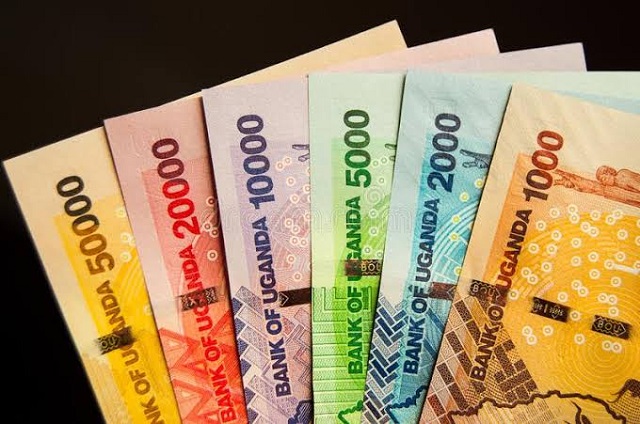
Kampala, Uganda | THE INDEPENDENT | The Uganda shilling ended the year 2022 on a strong not having appreciated against the US dollar over the previous few months.
According to the Ministry of Finance, Planning and Economic Development, the Ugandan shilling appreciated by 1.9 percent in December against the US Dollar, boosted mainly by increased inflows.
Over the period, the local currency traded at an average of 3,688.16 shillings to a dollar, in December 2022 compared to 3,760.23 shillings in November 2022.
This was because of increased dollar inflows from remittances, offshore portfolio investors, NGOs as well as Foreign Direct Investments (FDI) especially in the Oil and Gas.
Currently, the official rate as issued by the Bank of Uganda at close of Wednesday’s trading is 3,675.2 buying and 3.685.2 selling, showing further appreciation of the local currency since December.
Experts attribute the trend especially over the last one week, to additional inflows as NGOs bring money into the country to clear monthly obligations.
“The local unit is supported by month-end inflows from NGOs and other sectors that started to flow into the market and ably cover the dollar demand requirements,” said Catherine Kijjagulwe, Head of Markets at Absa Bank Uganda.
She expects that inflows will continue and the short-term outlook will not be very different. “The shilling is anticipated to trade within the 3650 – 3730 trading range in the short term with continued healthy month-end flows.”
On the regional market, the Uganda shilling continued to perform better than its peers, according to the market sources, with the Kenya Shilling facing increasing demand for the dollar.
The Kenyan shilling, Rwandan and Burundian Francs registered depreciations of 0.9 percent, 1.1 percent and 0.3 percent respectively against the US Dollar during the month of December 2022.
However, the Tanzanian shilling remained vitually unchanged during the month, trading at 2,308.7 to a dollar in December compared to 2,308.4 in November 2022.
“The Kenya shilling is still under pressure with the continued dollar scarcity, yet there are outstanding demand tickets that need to be covered – especially for the energy sector,” says Ms Kijjagulwe.
She expects that the unit is will be trading within the 124.20 -129.50 range during the week.
The Kenyan currency has also steadily declined against the shilling and now trades at 29.59 buying and 29.67 selling, compared to the end of December when the Kenya shilling sold for 30.9 to the Ugandan currency.
Globally, the US dollar this week showed some signs of weakening amidst continuing talk of a possible recession and also a likely slowed pace of interest rate hikes by the Federal Bank, affecting the currency.
The Euro touched highs of 1.0926 dollars this week and closed the week slightly lower at 1.087 as markets continue to predict that the European Central Bank will continue to aggressively hike interest rates.
Against the Uganda Shilling, the Bank of Uganda’s rate for the Euro as at Wednesday was 4,004.87 selling and 4,015.77 shillings selling.
The shilling has also generally strengthened against the British Pound amidst fluctuations, currently exchanging at 4,560 compared to 4,436 a month ago.
The UK Currency has also gained against the US Dollar over the last one month, the highest being on January 6th when the dollar exchanged for 0.84 pounds before declining to 0.81 on Friday.
The Ugandan cabinet has approved some amendments to the Foreign Exchange Bill that is aimed at strengthening regulation of the market and strengthening the operators, among others.
The proposals include providing for strengthening of the vetting requirements for the Directors and Manager of Foreign Exchange and Money remittance business and increasing the minimum number of shareholders from one to two.
The main objective, however, is ensuring that the operators have a strong capital base that will act as a buffer against any possible financial shocks.
“Since the enactment of the Foreign Exchange Act 2004, there have been significant developments in the currency markets and demands from the currency sector to review the act,” says State Minister for FINANCE, Planning and Economic Development, Henry Musasizi.
He says that this is because the advent of technological innovation development in East African Community, the Regional Legal Harmonisation criteria and “increasing client sophistication resulted in a shift in the currency market customers’ expectations.”
The Bill, if passed as it is, will see the minimum capital requirements for the foreign exchange bureau raised from 20 million shillings to 50 million shillings, while for a remittances operator, the minimum requirement will rise from the current 50 million to 200 million shillings.
The country’s exports receipts declined by 4.7 percent from 348.82 million dollars in October to 335.77 million in November 2022, mainly because of the reduction in the volume of coffee exported during the month.
However, the impact of lower exports on the foreign exchange was slightly offset by the decline in the import bill 18.4 million dollars to 654.06 million in October 2022, due to lower private sector import volumes.
The decline in coffee exports continued into December to with a total 59.54 million dollars, giving a decrease of 21 percent compared to the November earnings.
*****
URN
 The Independent Uganda: You get the Truth we Pay the Price
The Independent Uganda: You get the Truth we Pay the Price



